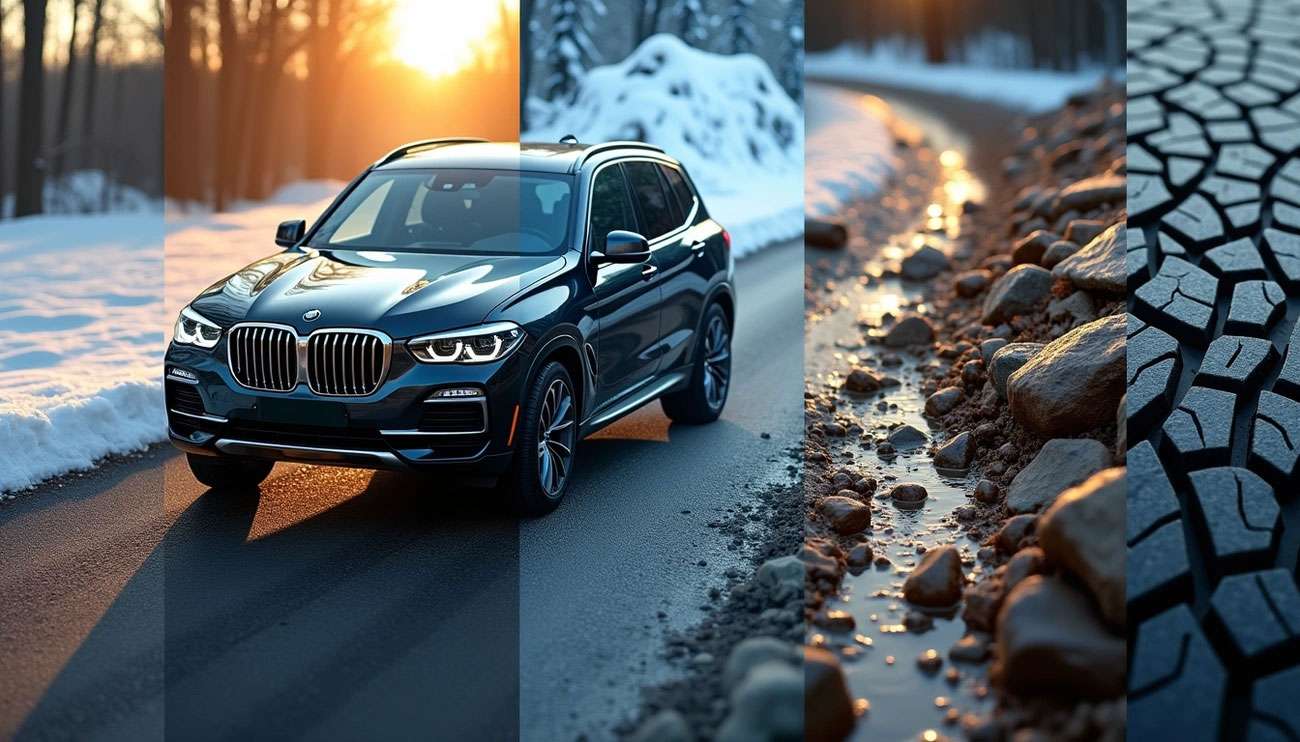
What are the different types of tires? The answer can literally save your life. Worn tires at highway speeds in wet conditions increase your stopping distance by 43% – that's an extra 87 feet, longer than a semitrailer. We've seen too many drivers discover this the hard way.
At Performance Plus Tire, we understand that choosing the right tire isn't just about getting from point A to point B. All-season tires dominate the market for good reason – they offer versatility, smooth rides, and reliable traction on wet roads and light snow. But when winter hits hard, winter tires become essential. Their specialized rubber compounds stay flexible in freezing temperatures, delivering superior grip on snow and ice.
We've tested and analyzed 23 different tire types to help you make the smartest choice for your specific driving needs. Performance tires transform cornering ability. Off-road options conquer rough terrain. The right tire selection dramatically improves your entire driving experience. Your climate, driving habits, and vehicle type determine which tire will serve you best.
Our expert team breaks down each tire type's key features, advantages, limitations, and ideal applications. Whether you're shopping for a family sedan, high-performance sports car, or heavy-duty truck, we provide the proven recommendations you need to make the right choice.
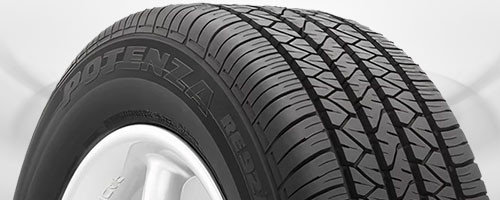
All-season tires offer year-round versatility for drivers who want convenience without sacrificing performance. These tires blend the best characteristics of summer and winter designs to create a balanced solution for varied driving conditions.
All-season tires feature specialized tread designs engineered to handle both dry and wet road conditions effectively. The moderate tread depth combined with separate water evacuation grooves reduces hydroplaning risk. Their rubber compounds remain flexible across temperature ranges, though grip diminishes when temperatures drop below 45°F (7°C).
Most all-season tires carry the M+S (Mud and Snow) rating, indicating capability in light winter conditions, though this doesn't qualify them as dedicated winter tires. The tread patterns incorporate sipes—small slits that enhance wet road traction and light snow performance.
These tires deliver impressive longevity, with some models offering up to 80,000-mile treadwear warranties. This durability comes from wear-resistant compounds designed for consistent performance across various temperatures.
Pros:
Year-round convenience eliminating seasonal tire changes
Cost-effective compared to buying separate seasonal sets
Balanced performance on dry, wet, and light snow surfaces
Extended tread life compared to winter alternatives
Effective water evacuation preventing hydroplaning
Cons:
Compromised performance below 45°F
Limited capability in heavy snow or ice
Reduced effectiveness in extreme weather
Not optimized for specific conditions
All-season tires excel in moderate climates and mild winters. They're perfect for drivers who rarely face severe winter conditions or sustained freezing temperatures. Urban drivers in temperate zones dealing with occasional rain and light snow find these tires provide the ideal balance.
Looking for quality all-season tires for your vehicle? Visit Performance Plus Tire to explore our wide selection.
However, drivers in areas with extended cold seasons or frequent heavy snowfall should consider specialized winter tires instead. For regions with truly mild winters, all-season tires deliver reliable performance throughout spring, summer, fall, and light winter conditions.
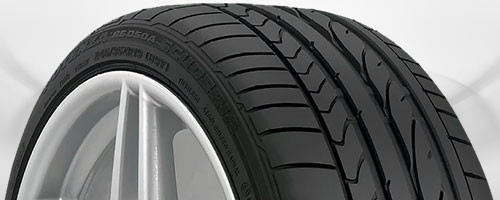
Summer tires, also known as performance tires, deliver maximum grip and handling precision for warm weather driving. These specialized tires perform best when temperatures consistently stay above 45°F.
Summer tires use specialized rubber compounds that stay flexible yet firm in hot temperatures, creating exceptional road contact. The tread design features fewer grooves and larger blocks, which maximizes the contact patch for superior stability. Despite what many drivers think, summer tires actually excel in wet conditions thanks to their water evacuation channels that resist hydroplaning effectively. The lower-profile construction and rigid sidewalls significantly improve cornering ability and steering response.
Pros:
Superior handling for acceleration, braking, and cornering
Excellent wet-road grip that reduces hydroplaning risk
Better fuel economy through lower rolling resistance
Enhanced responsiveness with anti-lock braking systems
Run-flat capabilities in many models (can drive up to 50 miles after puncture)
Cons:
Performance drops significantly below 45°F
Higher cost compared to all-season alternatives
Shorter tread life due to softer compounds
Firmer ride quality affects comfort
Completely unsuitable for winter conditions
Summer tires serve drivers in warm climates or those seeking maximum performance. Sports car enthusiasts particularly value the enhanced handling that transforms spirited driving experiences. Daily commuters in areas with consistent warm temperatures benefit from the superior wet-weather capabilities.
These tires work best for drivers willing to swap to winter tires when cold weather arrives. For those keeping a spare set of wheels, summer tires provide unmatched performance during the warmer months when temperatures stay consistently above 45°F.
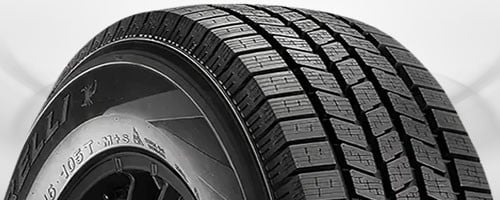
Winter tires revolutionize cold-weather driving safety. These specialized tires use advanced rubber compounds and tread designs engineered specifically for temperatures below 45°F.
Winter tires feature unique rubber compounds that remain flexible in freezing temperatures, maintaining crucial grip when other tires harden and lose traction. The tread patterns incorporate deeper grooves and thousands of sipes—microscopic slits that create biting edges for snow and ice.
Many winter tires carry the Three-Peak Mountain Snowflake (3PMSF) symbol, indicating they meet strict snow traction performance requirements. This certification guarantees reliable performance in severe snow conditions, unlike the basic M+S rating found on all-season tires.
The aggressive tread design includes wider grooves that effectively expel snow and slush. This self-cleaning ability prevents snow from packing into the tread, maintaining consistent traction. Studies show winter tires can reduce braking distances on snow by up to 30% compared to all-season alternatives.
Pros:
Superior traction on snow and ice surfaces
Shorter braking distances in cold weather
Enhanced control during winter acceleration
Improved cornering stability in snow
Reduced accident risk in winter conditions
Cons:
Poor warm-weather performance
Accelerated wear above 45°F
Requires seasonal tire changes
Storage needs for off-season
Additional cost for second tire set
Winter tires become essential for drivers facing regular snow and ice conditions. Areas with sustained freezing temperatures benefit most from dedicated winter rubber. Mountainous regions and northern climates with extended cold seasons require the enhanced safety these tires provide.
Even drivers in moderate climates should consider winter tires if temperatures consistently drop below 45°F. The improved braking and handling in cold, wet conditions significantly enhance safety beyond just snow performance. Many insurance companies recognize this safety advantage by offering discounts for winter tire use.
All-weather tires bridge the gap between all-season and winter tires, creating a true year-round solution. These versatile performers carry the Three-Peak Mountain Snowflake certification while maintaining reasonable warm-weather capabilities.
All-weather tires combine aggressive winter-capable tread patterns with rubber compounds that function across wider temperature ranges. The 3PMSF certification confirms they meet the same snow performance standards as dedicated winter tires. This makes them legally acceptable as winter tires in regions requiring seasonal tire changes.
The tread design incorporates deep grooves and numerous sipes for snow traction while maintaining stability in warm conditions. The rubber compounds balance flexibility for cold-weather grip with durability for year-round use. This engineering compromise delivers acceptable performance across all seasons without the need for seasonal tire swaps.
Pros:
3PMSF certified for severe snow
No seasonal tire changes required
Cost savings versus two tire sets
Eliminates off-season storage needs
Reliable year-round performance
Cons:
Winter performance below dedicated winter tires
Warm-weather handling inferior to summer tires
Higher rolling resistance affects fuel economy
Shorter tread life than all-season tires
Compromise across all conditions
All-weather tires suit drivers facing occasional severe winter conditions who want year-round convenience. Urban drivers in transitional climates appreciate not scheduling seasonal tire changes. Areas with unpredictable winter weather benefit from having winter capability ready when needed.
These tires work well for drivers seeking better winter performance than all-season tires without committing to dedicated winter rubber. However, those facing extended severe winters should still choose dedicated winter tires for maximum safety and performance.
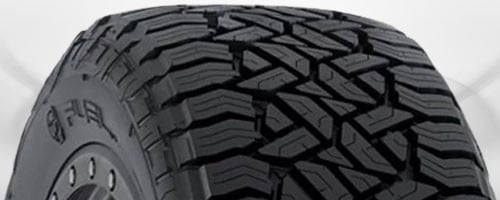
All-terrain tires deliver versatility for drivers who split time between highways and off-road adventures. These rugged performers balance on-road comfort with genuine off-road capability.
All-terrain tires feature open tread patterns with larger blocks and deeper voids compared to highway tires. This design provides grip on loose surfaces like gravel, dirt, and mud while maintaining acceptable road manners. The reinforced sidewalls resist punctures from rocks and debris encountered off-road.
Most all-terrain designs incorporate the M+S rating and many add the 3PMSF symbol for snow capability. The aggressive tread pattern effectively sheds mud and debris while providing traction across varied terrain. However, this same tread creates more road noise compared to highway-focused alternatives.
Pros:
Versatile performance on multiple surfaces
Enhanced traction on dirt, gravel, and mud
Reinforced construction resists damage
Many options carry snow ratings
Aggressive appearance appeals to many
Cons:
Increased road noise
Reduced fuel efficiency
Less responsive handling than highway tires
Shorter tread life in highway use
Higher cost than standard options
All-terrain tires excel for truck and SUV owners who regularly venture off pavement. Weekend warriors exploring trails, camping enthusiasts, and rural property owners benefit from the mixed-use capability. These tires handle daily commuting adequately while providing confidence on unpaved roads and moderate trails.
Drivers spending most time on highways should consider highway tires instead. Those tackling extreme off-road conditions need the enhanced capability of mud-terrain alternatives. All-terrain tires represent the best middle ground for genuine mixed-use driving.
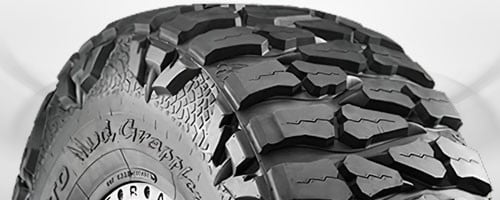
Mud-terrain tires represent the ultimate off-road solution for extreme conditions. These aggressive tires sacrifice on-road refinement for maximum off-pavement capability.
Mud-terrain tires feature extremely aggressive tread patterns with large, widely-spaced blocks designed to bite into mud, sand, and loose terrain. The massive voids between tread blocks allow the tire to self-clean, preventing mud from packing and reducing traction. Reinforced sidewalls with additional plies protect against punctures and allow lower air pressures for enhanced off-road grip.
The tread blocks often extend onto the sidewalls, providing additional traction in deep ruts and when aired down. However, this aggressive design creates significant road noise and vibration during highway driving. The specialized rubber compounds prioritize off-road durability over on-road comfort or longevity.
Pros:
Maximum off-road traction
Excellent self-cleaning capability
Enhanced puncture resistance
Superior performance in mud and sand
Impressive appearance for enthusiasts
Cons:
Excessive road noise
Poor wet pavement performance
Significantly reduced fuel economy
Short tread life on pavement
Harsh ride quality on roads
Mud-terrain tires serve serious off-road enthusiasts who regularly tackle extreme conditions. Rock crawlers, competitive off-roaders, and those frequently navigating deep mud require this level of traction. These tires excel for dedicated off-road vehicles that see limited highway use.
Daily drivers should avoid mud-terrain tires unless frequently facing truly extreme conditions. The significant compromises in road noise, fuel economy, and handling make them impractical for primarily highway use. All-terrain tires provide better balance for most mixed-use scenarios.
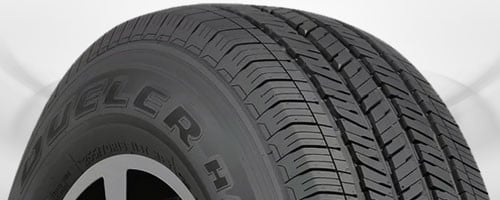
Highway tires prioritize on-road performance, comfort, and efficiency. These tires excel for trucks and SUVs used primarily on paved surfaces.
Highway tires feature smooth, closely-spaced tread patterns optimized for road contact and quiet operation. The design maximizes tread life and fuel efficiency while maintaining good wet-weather traction through strategically placed grooves and sipes. The rubber compounds balance durability with compliance for comfortable rides.
These tires typically offer the longest tread life among truck tire categories, with many models warranted for 60,000 miles or more. The construction emphasizes stability and predictable handling on highways while maintaining acceptable performance on occasional light gravel or dirt roads.
Pros:
Quiet, comfortable highway operation
Excellent fuel efficiency
Long tread life
Predictable handling
Lower cost than aggressive alternatives
Cons:
Limited off-road capability
Reduced traction on loose surfaces
Less aggressive appearance
Not ideal for severe winter conditions
May feel less planted than all-terrain options
Highway tires suit truck and SUV owners who rarely leave paved roads. Daily commuters, highway travelers, and urban drivers benefit from the quiet operation and fuel efficiency. These tires make sense for those prioritizing comfort, longevity, and cost-effectiveness over off-road capability.
Anyone regularly venturing onto unpaved roads should consider all-terrain alternatives. Highway tires work best for vehicles serving as daily drivers, family haulers, or towing vehicles that stick to maintained roads.
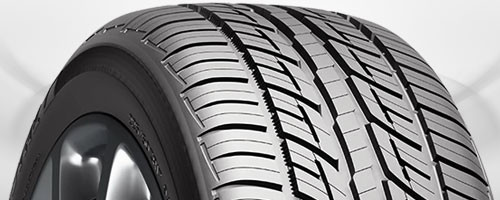
Performance tires transform vehicle dynamics with enhanced grip and handling precision. These specialized tires cater to driving enthusiasts seeking maximum road-holding capability.
Performance tires use softer rubber compounds that create exceptional grip through increased road contact. The tread patterns feature wider contact patches with minimal grooves, maximizing the tire's footprint during cornering, acceleration, and braking. Rigid sidewalls minimize flex for sharper steering response and improved high-speed stability.
Many performance tires incorporate advanced technologies like asymmetric tread patterns that optimize different sections for specific functions. The outside shoulder features larger, stiffer blocks for cornering while the inside uses more sipes for wet traction. This specialized design delivers balanced performance across various driving conditions.
Pros:
Enhanced grip for acceleration and braking
Superior cornering ability
Sharp, responsive steering feel
Improved high-speed stability
Better wet traction than expected
Cons:
Higher cost than standard tires
Shorter tread life due to soft compounds
Firmer ride quality
Limited cold-weather performance
Increased road noise
Performance tires suit sports cars, sport sedans, and performance-oriented vehicles. Driving enthusiasts who value sharp handling and maximum grip benefit most. These tires excel for spirited driving on winding roads, track days, and situations where enhanced control matters.
Daily commuters in comfortable family sedans may find performance tires unnecessarily firm and expensive. The shorter tread life and premium pricing make them impractical unless handling enhancement justifies the trade-offs. Those seeking balanced everyday performance should consider touring tires instead.
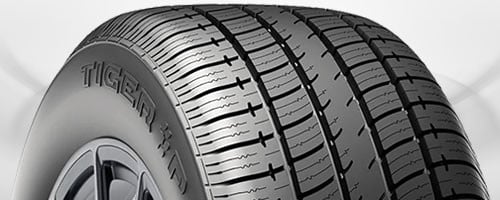
Touring tires prioritize comfort and refinement for long-distance driving. These tires blend quiet operation with respectable handling for discerning drivers.
Touring tires feature specialized tread patterns designed to minimize road noise through varied pitch sequences. The flexible sidewalls absorb road imperfections, creating a smooth, comfortable ride. Advanced rubber compounds balance traction with extended tread life, often warranted for 60,000 to 80,000 miles.
The construction emphasizes stability and predictable handling without the harsh ride quality of performance alternatives. Many touring tires incorporate internal noise-dampening technology and optimized tread blocks that reduce vibration. This engineering creates a refined driving experience suitable for sedans, luxury vehicles, and daily drivers prioritizing comfort.
Pros:
Exceptionally quiet operation
Comfortable, compliant ride
Long tread life
Good wet-weather traction
Refined highway manners
Cons:
Limited performance capability
Less responsive handling than performance tires
Not designed for spirited driving
May feel disconnected in aggressive maneuvers
Higher cost than basic all-season options
Touring tires excel for highway commuters and long-distance travelers. Luxury vehicle owners, frequent road trippers, and drivers prioritizing comfort over performance benefit most. These tires suit sedans, minivans, and family vehicles where quiet operation and smooth rides matter.
Anyone seeking enhanced handling or planning spirited driving should choose performance alternatives instead. Touring tires work best for comfortable, refined daily driving where longevity and quietness outweigh maximum grip considerations.
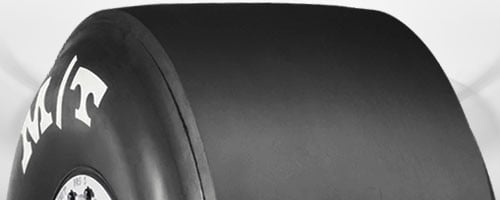
Track and competition tires represent the pinnacle of grip technology for motorsports applications. These extreme-performance tires sacrifice everything for maximum traction on race circuits.
Track tires use ultra-soft rubber compounds that reach optimal operating temperatures only after sustained aggressive driving. The minimal tread patterns—or complete absence of tread in racing slicks—maximize contact patch for ultimate grip. Advanced construction techniques minimize flex and maintain tire shape even under extreme cornering forces.
DOT-legal competition tires include minimal tread to satisfy street legality requirements while maintaining near-slick performance. These tires require proper warm-up procedures and lose effectiveness when cold. The specialized compounds wear extremely quickly under normal driving conditions but deliver unmatched performance at their operating limits.
Pros:
Maximum grip for track driving
Exceptional high-speed stability
Precise steering response
Optimal for competition use
Transform vehicle capabilities
Cons:
Extremely short tread life
Dangerous in cold or wet conditions
Require warm-up for safe use
Very high cost per mile
Unsuitable for street driving
Track tires serve dedicated motorsports competitors and serious track day enthusiasts. These tires belong exclusively on race circuits or dedicated track vehicles. The extreme nature requires understanding their limitations and proper usage techniques.
Street-driven vehicles should never rely on track tires for daily use. Even DOT-legal competition variants prove dangerous in everyday conditions. Reserve these tires for competition events or dedicated track sessions where their capabilities can be properly utilized.
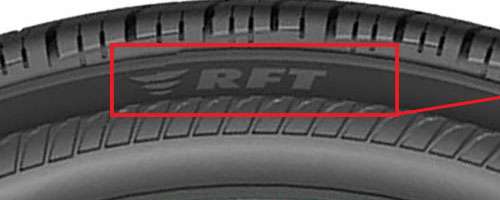
Run-flat tires eliminate the immediate need for roadside tire changes after punctures. These innovative designs maintain mobility even after complete air pressure loss.
Run-flat tires feature ultra-stiff reinforced sidewalls that support the vehicle's weight without air pressure. This construction allows continued driving for up to 50 miles at reduced speeds (typically 50 mph) after puncture. The technology requires tire pressure monitoring systems (TPMS) to alert drivers of air loss since the reinforced construction masks the feel of deflation.
Two main run-flat designs exist: self-supporting types with reinforced sidewalls and support-ring systems that use a rigid ring inside the tire. Self-supporting designs dominate the market due to simpler installation and broader availability. The added sidewall material creates a firmer ride compared to conventional tires.
Pros:
Continued mobility after puncture
Enhanced safety by avoiding roadside changes
Additional cargo space without spare
Better stability during blowouts
Peace of mind in remote areas
Cons:
Higher costs (20-30% premium)
Stiffer ride quality
Limited repair options
Requires TPMS
Fewer size and model choices
Run-flat tires suit luxury vehicles and drivers prioritizing convenience and safety. Urban drivers without safe places to change tires benefit from continued mobility. Vehicles without spare tire storage or those seeking maximum cargo space find run-flats attractive.
Budget-conscious drivers may find the premium pricing and firmer ride quality unappealing. Those comfortable with traditional spare tires or roadside assistance may prefer conventional alternatives. Run-flats work best when the convenience justifies the compromises.
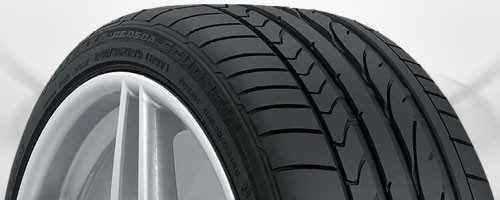
Ultra-high performance (UHP) tires push grip and handling capabilities to extreme levels. These specialized tires cater to high-performance sports cars and aggressive driving styles.
UHP tires use exceptionally soft rubber compounds optimized for maximum grip at high temperatures. The advanced tread patterns feature large contact patches with minimal void space for superior road holding. Reinforced sidewalls maintain shape during extreme cornering forces while delivering precise steering response.
Many UHP tires carry speed ratings of W (168 mph) or Y (186 mph) or higher, indicating capabilities far exceeding typical driving conditions. The construction incorporates high-performance materials like aramid and polyamide for strength without excessive weight. These technologies create tires capable of sustained high-speed operation found only on racetracks or unrestricted highways.
Pros:
Exceptional grip and traction
Superior high-speed stability
Precise handling response
Enhanced braking performance
Transform vehicle capabilities
Cons:
Very short tread life
High cost per tire
Poor cold-weather performance
Firm ride quality
Increased road noise
UHP tires suit high-performance sports cars, luxury sports sedans, and track-oriented vehicles. Drivers who regularly participate in track days or spirited driving on challenging roads benefit most. These tires excel when their extreme capabilities can be properly utilized.
Typical daily driving rarely justifies UHP tires' costs and compromises. The short tread life and poor cold-weather performance make them impractical for most drivers. Standard performance tires provide better value and versatility for street-driven vehicles.
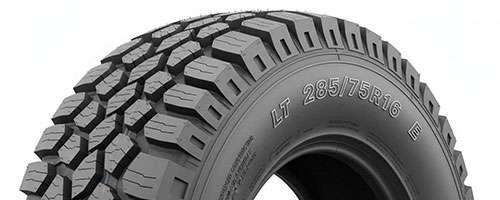
Light truck (LT) tires handle the demanding needs of trucks, vans, and SUVs used for work or towing. These rugged tires prioritize load capacity and durability over comfort.
LT tires feature reinforced construction with additional plies and stronger sidewalls compared to passenger tires. This robust design supports heavier loads and higher inflation pressures necessary for towing and hauling. The designation "LT" before the size indicates these enhanced capabilities.
Load range ratings (C, D, E, F) specify the tire's maximum load capacity at specified pressures. Higher load ranges indicate greater capacity but also firmer rides due to stiffer construction. Many LT tires incorporate features from all-terrain or highway designs depending on intended use, creating specialized variants for different applications.
Pros:
Higher load capacity
Enhanced durability
Better towing stability
Puncture resistance
Extended service life under heavy use
Cons:
Firmer ride quality
Higher cost than passenger tires
Reduced fuel efficiency
Heavier weight
May be unnecessary for light-duty use
LT tires serve trucks and SUVs regularly carrying heavy loads or towing trailers. Commercial applications, work trucks, and vehicles frequently operating at maximum capacity require this enhanced construction. Anyone regularly approaching their vehicle's payload limits benefits from LT tire capabilities.
Light-duty truck owners rarely carrying loads should consider passenger-rated alternatives for better comfort and efficiency. The extra capability comes with compromises only justified by actual heavy-use demands.
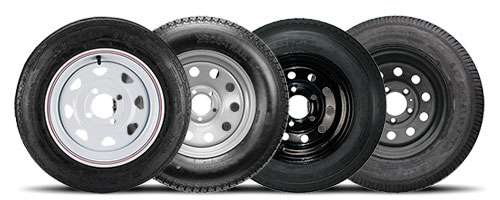
Trailer tires feature specialized designs for the unique demands of towed applications. These purpose-built tires differ significantly from vehicle tires in construction and capabilities.
Trailer tires use stiffer sidewalls and specialized rubber compounds optimized for the specific stresses of towing. The designation "ST" (Special Trailer) identifies these tires designed exclusively for trailer use. The construction emphasizes stability and load support over ride comfort or traction.
Trailer tires operate under different conditions than vehicle tires—they don't require traction for acceleration or braking, experience different weight distributions, and may sit unused for extended periods. The tread patterns prioritize stability and heat dissipation during highway towing. Many trailer tires incorporate features resisting sidewall damage from curbs and loading ramps.
Pros:
Optimized for towing stresses
Enhanced stability under load
Resistant to trailer sway
Durable construction
Cost-effective for purpose
Cons:
Never use on powered vehicles
Limited speed ratings
Age out before wearing out
Require proper maintenance
Prone to dry rot if stored improperly
Trailer tires belong exclusively on trailers—utility trailers, boat trailers, RVs, and cargo trailers. The specialized construction makes them unsuitable and dangerous for use on powered vehicles. Anyone towing regularly should use properly rated ST tires rather than attempting to substitute vehicle tires.
Proper maintenance matters more with trailer tires since they often sit unused for extended periods. Regular inspection, proper inflation, and protection from UV damage extend their service life.
Spare tires provide emergency mobility after punctures or blowouts. These backup tires come in various forms with different capabilities and limitations.
Full-size spares match the vehicle's regular tires in size and capability, allowing unrestricted driving until regular tire replacement. Temporary spares (often called "donuts") feature compact designs with limited capabilities—typically rated for 50-70 mph and 50-100 miles maximum. The smaller size saves space and weight but requires careful adherence to speed and distance limits.
Many modern vehicles eliminate spare tires entirely in favor of run-flat tires or tire repair kits. This trend creates additional cargo space and reduces vehicle weight but leaves drivers dependent on roadside assistance after tire failures.
Pros:
Emergency mobility after tire failure
Avoids roadside assistance delays
Full-size spares allow unrestricted driving
Self-sufficiency in remote areas
Peace of mind
Cons:
Occupies cargo space
Adds vehicle weight
Temporary spares have severe limitations
Require periodic inspection
Age even when unused
Full-size spares suit anyone frequently driving in remote areas or valuing self-sufficiency. The ability to continue normal driving after tire replacement proves invaluable when far from tire shops. Temporary spares work for urban drivers with nearby tire services and short distances to travel.
Drivers comfortable with roadside assistance or run-flat tires may prefer the extra cargo space. However, having any spare tire provides peace of mind and emergency mobility that repair kits alone cannot match.
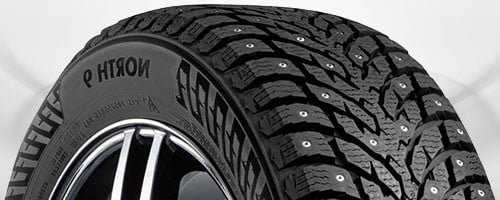
Studded tires provide maximum traction on ice through metal studs embedded in the tread. These specialized winter tires offer unmatched grip on frozen surfaces.
Studded tires incorporate small metal pins that protrude slightly from the tread surface, creating mechanical grip on ice. The studs dig into frozen surfaces, delivering traction impossible for rubber alone to achieve. The base tire design matches winter tire features—specialized rubber compounds and aggressive tread patterns—enhanced by the studded grip system.
Regulations vary by region regarding studded tire use. Many jurisdictions restrict them to winter months due to pavement damage concerns. Some areas prohibit studs entirely. The metal studs create noise on bare pavement and accelerate road surface wear, leading to these restrictions.
Pros:
Superior ice traction
Unmatched grip on frozen surfaces
Enhanced braking on ice
Better acceleration on icy hills
Increased safety in extreme conditions
Cons:
Seasonal regulations limit use
Increased road noise
Damage pavement
Reduced traction on bare pavement
Higher cost than unstudded alternatives
Studded tires serve drivers in regions with persistent ice conditions where studs remain legal. Northern climates with extended periods of frozen roads benefit most. Areas with steep, icy hills where maximum traction proves critical justify studded tires.
Drivers in areas with mixed winter conditions may find modern studless winter tires provide adequate performance without studded tire limitations. Check local regulations before purchasing, as many areas restrict or prohibit studded tire use.
Studdable tires offer flexibility through optional stud installation. These winter tires feature pre-drilled holes allowing owners to add studs based on conditions and regulations.
Studdable tires incorporate reinforced tread blocks with molded holes designed to accept aftermarket studs. This design allows the tire to function as a standard winter tire or be enhanced with studs as needed. The flexibility adapts to changing regulations, moving between jurisdictions, or different winter severity levels.
When used without studs, these tires perform comparably to standard winter tires. Adding studs transforms ice traction capabilities while accepting the noise and pavement wear trade-offs. Professional installation ensures proper stud retention and optimal performance.
Pros:
Adaptable to conditions and regulations
Good winter performance without studs
Option to add studs later
Single tire purchase serves multiple needs
Cost-effective flexibility
Cons:
Additional cost if adding studs
Installation time and expense
Slightly compromised performance versus purpose-built options
Studs may be difficult to remove cleanly
Limited time window for optimal stud installation
Studdable tires suit drivers uncertain about studded tire needs or those moving between different regulatory jurisdictions. The flexibility allows purchasing one tire that adapts to varying conditions. Drivers in areas with occasional severe ice but predominantly snow-covered roads benefit from the option.
Anyone certain they'll need studs should buy pre-studded tires for better value. Those knowing they won't use studs should choose tires optimized as studless winter designs. Studdable tires shine when flexibility matters most.
Low-profile tires feature short sidewalls creating aggressive appearance and enhanced handling characteristics. These style-focused tires balance aesthetics with performance.
Low-profile tires use aspect ratios of 50 or lower (the number after the slash in tire size indicates sidewall height as a percentage of width). The shorter sidewalls reduce flex during cornering, improving steering response and handling precision. However, this same characteristic compromises ride quality since less sidewall means less cushioning.
The performance benefits come from reduced sidewall flex allowing more direct communication between the road and steering wheel. The shorter sidewalls also accommodate larger brake components necessary for high-performance vehicles. The aesthetic appeal attracts enthusiasts seeking aggressive wheel and tire combinations.
Pros:
Enhanced handling and cornering
Improved steering response
Aggressive, sporty appearance
Better high-speed stability
Accommodates larger brakes
Cons:
Harsh ride quality
Increased risk of wheel and tire damage
Higher replacement costs
Reduced comfort
More susceptible to pothole damage
Low-profile tires suit performance vehicles and drivers prioritizing handling over comfort. Sports cars, performance sedans, and modified vehicles benefit from the enhanced dynamics. The aggressive appearance appeals to enthusiasts seeking visual impact.
Daily drivers on rough roads should avoid extremely low profiles. The compromised ride quality and increased damage risk make them impractical for many real-world conditions. Moderate profiles balance performance with livability better for most applications.
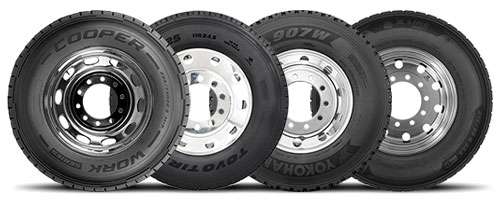
Commercial tires handle the extreme demands of fleet vehicles and heavy-duty applications. These purpose-built tires prioritize longevity and load capacity for business use.
Commercial tires feature robust construction with multiple steel belts and reinforced casings designed for maximum load capacity and extended service life. The tread patterns emphasize even wear and resistance to irregular wear patterns common in commercial use. Many designs allow retreading, extending tire life through replacement of worn tread while retaining the casing.
Position-specific designs optimize performance—steer tires prioritize handling, drive tires focus on traction and durability, and trailer tires emphasize stability and fuel efficiency. The specialized constructions and compounds deliver hundreds of thousands of miles under proper maintenance and rotation schedules.
Pros:
Exceptional durability
Extended service life
Retreading capability reduces costs
Position-specific optimization
Fleet-focused support and services
Cons:
Harsh ride quality
Designed for loaded operation
Poor unloaded handling
Limited consumer availability
Unnecessary for personal use
Commercial tires serve delivery vehicles, work trucks, and fleet applications where maximum durability and load capacity matter most. Businesses operating multiple vehicles benefit from standardized commercial tire programs. The retreading capability and extended service life create significant cost savings for high-mileage operations.
Personal truck owners should avoid commercial tires unless regularly operating at maximum capacity. The harsh ride and poor unloaded characteristics make them impractical for typical personal use. Light truck tires provide better balance for non-commercial applications.

Winter performance tires blend winter capability with enhanced handling dynamics. These specialized tires serve performance vehicle owners facing winter conditions.
Winter performance tires combine the 3PMSF certification and winter-specific rubber compounds with performance-oriented tread patterns and construction. The designs balance winter traction demands with the handling characteristics performance drivers expect. This creates tires that transform sports cars and performance sedans into capable winter vehicles without completely sacrificing driving dynamics.
The tread patterns incorporate winter features like deep sipes and snow-evacuation grooves while maintaining larger contact patches than standard winter tires. The sidewall construction provides better steering response than conventional winter designs while retaining flexibility for cold-weather grip. This engineering compromise allows performance vehicles to remain engaging in winter conditions.
Pros:
Certified winter capability
Better handling than standard winter tires
Maintains performance character
Suitable for sports cars
Improved steering feel
Cons:
Snow traction below dedicated winter tires
Higher cost than standard winter options
Shorter tread life
Limited size availability
Compromised versus dedicated designs
Winter performance tires suit sports car and performance vehicle owners who drive year-round in winter conditions. Enthusiasts unwilling to sacrifice too much handling for winter capability find these tires provide the best compromise. They work well for performance vehicles serving as only cars in winter climates.
Anyone prioritizing maximum snow traction should choose standard winter tires instead. Daily drivers in severe winter conditions benefit more from conventional winter tire designs. Winter performance tires shine when driving dynamics matter even in winter.

Grand touring tires balance performance characteristics with touring comfort. These versatile tires serve drivers wanting enhanced dynamics without sacrificing refinement.
Grand touring tires blend performance tire grip with touring tire comfort through sophisticated design compromises. The rubber compounds provide better grip than standard touring alternatives while maintaining quieter operation than dedicated performance tires. The construction balances responsive handling with compliant ride quality suitable for daily driving.
The tread patterns incorporate features from both categories—larger contact patches for grip combined with noise-reducing pitch sequences for quiet operation. Many models offer extended tread life warranties while maintaining respectable performance capabilities. This creates all-season tires capable of engaging driving without the harsh compromises of pure performance designs.
Pros:
Balanced performance and comfort
Enhanced handling versus touring tires
Quieter than performance alternatives
Extended tread life
All-season versatility
Cons:
Performance below dedicated sport tires
Comfort below pure touring designs
Higher cost than standard all-season
Compromised versus specialized options
May feel underwhelming to enthusiasts
Grand touring tires suit drivers wanting better-than-average handling without sacrificing daily comfort. Sport sedans, performance-oriented family cars, and drivers appreciating spirited but not aggressive driving benefit most. These tires provide enhanced capability for engaging driving while remaining refined for daily use.
Serious enthusiasts should choose dedicated performance tires for maximum capability. Those prioritizing comfort above all should select touring alternatives. Grand touring tires excel when balance between characteristics matters most.

All-season SUV tires address the specific needs of crossovers and sport utility vehicles. These specialized designs handle heavier weights while delivering refined on-road performance.
All-season SUV tires feature reinforced construction to support the higher weights of SUVs and crossovers compared to passenger cars. The sidewalls use additional reinforcement while the internal structure handles increased loads without excessive flex. The tread patterns balance all-season capability with features addressing SUV-specific needs like noise reduction and even wear distribution.
Many designs incorporate technology minimizing the rolling resistance typically associated with heavier vehicles. This improves fuel economy while maintaining the load capacity and durability SUVs require. The rubber compounds balance longevity with grip, often delivering warranties of 60,000 to 70,000 miles despite the heavier vehicles involved.
Pros:
Optimized for SUV weight and handling
Long tread life
Year-round versatility
Noise-reducing technology
Improved fuel economy versus truck tires
Cons:
Higher fuel consumption than passenger tires
Performance reduced below -10°C
Limited off-road capability
Costs more than passenger equivalents
Heavier than standard all-season options
All-season SUV tires serve crossovers and SUVs used primarily on paved roads in moderate climates. Daily drivers, family haulers, and urban SUVs benefit from the balanced capabilities. These tires suit drivers wanting SUV versatility without aggressive off-road tires' compromises.
Anyone regularly venturing off-road should consider all-terrain alternatives. Those facing severe winters need winter tires regardless of SUV type. All-season SUV tires excel for on-road focused SUVs in temperate conditions.
Ribbed tires feature continuous circumferential tread grooves creating longitudinal ribs. These specialized designs prioritize steering stability and straight-line tracking.
Ribbed tires use parallel grooves running around the tire's circumference, creating continuous ribs of tread. This pattern excels for stability and straight-line tracking, making them ideal for steering axles on trucks and commercial vehicles. The design reduces wear and provides predictable handling characteristics important for heavy vehicles.
The continuous ribs maintain constant road contact, creating smooth operation and consistent performance. The pattern also promotes even wear when properly maintained through rotation and alignment. However, the design offers limited traction on loose surfaces compared to more aggressive patterns.
Pros:
Excellent straight-line stability
Low rolling resistance
Even wear patterns
Predictable handling
Ideal for steering axles
Cons:
Limited traction off pavement
Poor performance on loose surfaces
Not suitable for all positions
Compromised snow capability
Limited consumer applications
Ribbed tires serve commercial truck steering axles and applications where straight-line stability matters most. The design works well for highway-focused commercial vehicles prioritizing fuel efficiency and predictable handling. Position-specific use in commercial applications maximizes their strengths.
Personal vehicles rarely benefit from ribbed tire designs. The limited traction capabilities make them unsuitable for varied driving conditions typical consumers face. These tires work best in specialized commercial applications where their specific strengths align with requirements.
This comprehensive comparison table helps you quickly identify which tire type best matches your specific needs. Compare key features, applications, and trade-offs across all 23 tire types we've discussed.
Tire Type |
Key Features |
Best Applications |
Main Advantages |
Primary Limitations |
Temperature Range |
Typical Tread Life |
|---|---|---|---|---|---|---|
All-Season |
Moderate tread depth, balanced compounds |
Moderate climates, daily driving |
Year-round convenience, versatility |
Below 45°F performance drops |
Best above 45°F |
Up to 80,000 miles |
Summer |
Firm compounds, large tread blocks |
Warm climates, performance driving |
Superior dry/wet grip |
Dangerous below 45°F |
Above 45°F only |
Shorter than all-season |
Winter |
Deep sipes, flexible compounds |
Snow, ice, freezing conditions |
Superior cold-weather traction |
Poor warm-weather performance |
Below 45°F optimal |
Varies widely |
All-Weather |
3PMSF certified, hybrid design |
Variable climates, year-round use |
True winter capability, convenience |
Compromised versus specialists |
All temperatures |
Moderate longevity |
All-Terrain |
Open-tread design, reinforced sidewalls |
Light trucks, SUVs, 4WD vehicles |
Versatility on multiple surfaces |
Increased road noise |
Not specified |
Not specified |
Mud-Terrain |
Aggressive tread, large blocks, wide voids |
Extreme off-road conditions |
Exceptional off-road traction |
Poor wet pavement performance |
Not specified |
Short on pavement |
Performance |
Soft compounds, wider contact patches |
Sports cars, enthusiast vehicles |
Enhanced grip, sharp handling |
Higher cost, firmer ride |
Limited in cold |
Shorter than standard |
Touring |
Flexible sidewalls, specialized tread patterns |
Sedans, minivans, daily commuting |
Quiet operation, comfort |
Limited performance capability |
Not specified |
Up to 80,000 miles |
Run-Flat |
Ultra-stiff sidewalls, TPMS required |
Luxury vehicles, safety-conscious drivers |
Continued driving after puncture |
Higher costs, stiffer ride |
Not specified |
Not specified |
Ultra-High Performance |
Exceptionally soft compounds, reinforced sidewalls |
Sports cars, luxury sports sedans |
Superior high-speed handling |
Short tread life, high cost |
Poor in cold weather |
Shorter than standard |
All-Season SUV |
Reinforced sidewalls, noise-reducing tech |
SUVs, crossovers, daily use |
Long tread life, versatility |
Higher fuel consumption |
Reduced below -10°C |
Up to 70,000 miles |
Use this comparison to narrow down your options based on your specific driving needs, climate conditions, and vehicle type. Remember that the best tire is one that matches your actual driving patterns and local weather conditions.
Choosing the right tire transforms your entire driving experience. We've covered 23 different tire types because the perfect match exists for every vehicle and driving situation. Your safety depends on making the smart choice.
Climate matters most. All-season tires work great for moderate weather, but winter tires become essential when temperatures drop consistently below 45°F. Performance enthusiasts need the enhanced grip that sport and ultra-high performance options deliver. Off-road adventurers require the specialized traction of all-terrain or mud-terrain designs.
At Performance Plus Tire, we carry the best selection of tires at the lowest prices. Our extensive inventory includes every type we've discussed – from touring tires that prioritize comfort to track tires built for maximum performance. We understand that finding the right tire can feel overwhelming with so many options available.
Modern tire technology continues advancing rapidly. Run-flat tires eliminate roadside changes. Touring tires deliver whisper-quiet rides for long journeys. Competition tires provide track-ready performance for weekend warriors. The key is matching tire capabilities to your actual driving needs.
Remember the fundamentals of tire maintenance. Check tread depth regularly. Replace tires before wear compromises safety. Even the most advanced tire technology can't overcome poor maintenance or delayed replacement. Your tires represent your vehicle's only contact with the road.
Ready to upgrade your ride? Visit Performance Plus Tire today and experience the perfect combination of expert guidance, huge selection, and unbeatable prices. Our knowledgeable staff helps you find exactly the right tires for your vehicle and driving style.
At Performance Plus Tire, we make tire shopping simple. Browse our selection, compare options, and discover why thousands of customers trust us for their tire needs. Your perfect tire match is just a click away.
Understanding tire types is crucial for safety and performance - the right choice can dramatically improve your driving experience while the wrong one can increase stopping distances by up to 43%.
• Match tires to your climate: All-season tires work for moderate climates, but winter tires are essential when temperatures consistently drop below 45°F for superior snow and ice traction.
• Consider your driving style: Performance and ultra-high performance tires excel for sports cars and enthusiastic driving, while touring tires prioritize comfort for daily commuting.
• Off-road needs vary significantly: All-terrain tires offer versatility for mixed driving, while mud-terrain tires provide maximum traction in extreme conditions but sacrifice on-road comfort.
• Specialized applications require specific tires: Run-flat tires eliminate roadside changes, trailer tires handle towing stresses, and track tires maximize grip for circuit driving.
• Balance performance with practicality: Higher performance tires typically offer shorter tread life and higher costs, so choose based on your actual driving needs rather than maximum capability.
The key is matching tire technology to your specific driving conditions, vehicle type, and performance expectations. Whether you prioritize safety in winter conditions, maximum grip for performance driving, or long-lasting comfort for daily use, there's a tire type engineered for your exact needs.
There are several main categories of tires, including all-season, summer, winter, all-terrain, mud-terrain, performance, touring, run-flat, and specialized tires for trucks, trailers, and off-road use. Each type is designed for specific driving conditions and vehicle types.
Winter tires use special rubber compounds that remain flexible in cold temperatures and feature deeper treads with numerous sipes for better traction on snow and ice. All-season tires, while more versatile year-round, lose effectiveness below 45°F and don't perform as well in severe winter conditions.
Run-flat tires allow you to continue driving for up to 50 miles at reduced speeds after a puncture, eliminating the need for immediate roadside tire changes. They also provide better stability during blowouts and can create additional cargo space by removing the need for a spare tire.
Performance tires offer superior grip, sharper steering response, and improved cornering abilities, especially at high speeds. They use softer rubber compounds and specialized tread patterns to maximize road contact, resulting in enhanced handling for sports cars and enthusiast vehicles.
When selecting tires for an SUV, consider factors such as your typical driving conditions (highway, city, or off-road), climate, desired comfort level, and load-carrying needs. All-season SUV tires offer a good balance of performance and durability for most drivers, while specialized options like all-terrain or performance SUV tires cater to specific requirements.